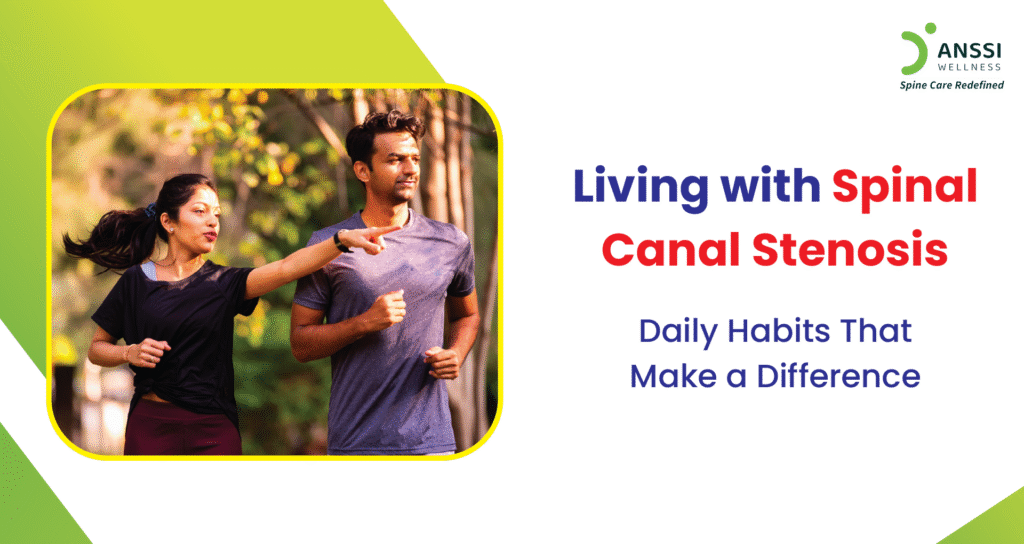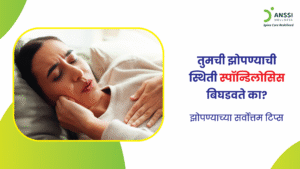Living with spinal canal stenosis can be challenging, but small, consistent changes in your daily routine can make a world of difference. This condition, caused by the narrowing of the spinal canal, often leads to back pain, numbness, tingling, or weakness in the legs.
While it’s a chronic condition, adopting healthy postural habits, movement routines, and non-surgical care can significantly ease discomfort and help you stay active and independent.
Understanding Spinal Canal Stenosis
Spinal canal stenosis occurs when the space around your spinal cord becomes too tight, compressing the nerves that travel through the spine.
It commonly affects older adults due to age-related wear and tear, but poor posture, spinal injuries, or degenerative conditions like arthritis can also contribute. Symptoms may start mild, such as stiffness or occasional leg pain, but can worsen over time if not managed properly.
Fortunately, with the right daily habits and non-invasive treatments, you can manage symptoms effectively and maintain a good quality of life without depending solely on medications or surgery.
Why Daily Habits Matter
Everyday movements, including how you sit, stand, sleep, or walk, influence the health of your spine. Poor posture or repetitive stress can aggravate nerve compression, while good posture and movement reduce pressure and improve circulation.
By making conscious adjustments to your daily life, you can prevent flare-ups, improve spinal flexibility, and slow down the progression of stenosis. Remember, spinal health isn’t built overnight; it’s maintained through small but consistent actions.
Posture Correction and Movement Patterns
Posture plays a major role in relieving stenosis-related discomfort.
- When sitting, ensure your back is supported by a chair with firm lumbar support.
- Keep your feet flat on the floor and avoid crossing your legs.
- When standing, distribute your weight evenly on both feet and avoid slouching forward.
Movement is equally important.
- Avoid long periods of inactivity, as sitting for extended hours can increase spinal compression.
- Get up every 30-40 minutes to stretch or take a short walk.
- Gentle stretches and low-impact activities like swimming, yoga, or walking are highly beneficial for maintaining flexibility.
Strengthening your core and back muscles through guided exercises can help support your spine naturally. A strong core improves posture, reduces strain on the lower back, and helps stabilise the spine during everyday activities.
Sleep Adjustments for Comfort and Recovery
Your sleeping posture can either help or hurt your spine.
- Sleeping on a firm mattress ensures proper support and alignment.
- If you sleep on your back, place a small pillow under your knees to reduce lower back strain.
- Side sleepers can place a pillow between their knees to keep the spine straight.
- Avoid sleeping on your stomach, as it puts the spine in an unnatural curve and may worsen nerve pressure.
Maintaining a consistent sleep schedule also helps your body recover from daytime strain and keeps inflammation in check.
Smart Sitting and Standing Habits
Since most people spend a large portion of the day sitting or standing, adopting spine-friendly habits in these positions is essential.
When sitting for work:
- Choose an ergonomic chair with adjustable height and back support.
- Ensure that your computer screen is at eye level to avoid neck strain.
- Use a footrest if necessary to ensure your knees are level with your hips.
For those who stand for long hours:
- Shift your weight from one foot to the other occasionally.
- Avoid standing completely still for long durations.
- Placing one foot on a small stool can help relieve lower back pressure.
Remember, frequent movement is key. Prolonged sitting or standing in one posture can increase stiffness and aggravate symptoms.
Non-Surgical Care and Professional Help
While lifestyle changes play a major role in managing spinal canal stenosis, professional non-surgical care can provide targeted relief. Treatments such as physiotherapy, spinal decompression, and posture correction programs are highly effective in reducing nerve pressure and improving mobility.
Non-surgical spinal decompression treatment, in particular, uses advanced equipment to gently stretch the spine and relieve compression on the affected discs and nerves. This USA-based treatment has shown remarkable results in patients with spinal stenosis, herniated discs, and chronic back pain, all without surgery, injections, or medication.
Complementing decompression with physiotherapy helps strengthen weak muscles, correct imbalances, and restore normal movement patterns. A professional spine care team can assess your posture, identify pain triggers, and design a customised plan that fits your daily life.
Taking Control of Your Spine Health
Living with spinal canal stenosis doesn’t mean giving up your daily comfort or mobility. With mindful posture, gentle exercises, quality sleep, and professional non-surgical care, you can manage pain effectively and continue doing the things you love.
The key lies in consistency and awareness. It’s important to maintain spine-friendly habits and seek expert help when needed. By investing time in your spinal health today, you can prevent the condition from worsening and ensure a more active, pain-free tomorrow.
About ANSSI:
ANSSI Wellness focuses on improving the quality of life for patients suffering from spinal issues, aiming to provide relief where other conventional treatments have failed. Through advanced Non-Surgical Spinal Decompression Treatment, ANSSI is committed to helping patients avoid surgery and recover in a safe, effective, and compassionate environment.
Connect with ANSSI Wellness on LinkedIn, Instagram, and Facebook for expert guidance.




